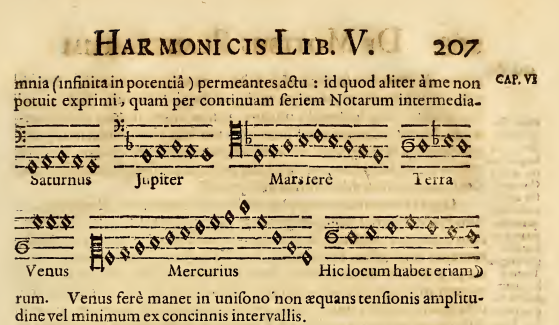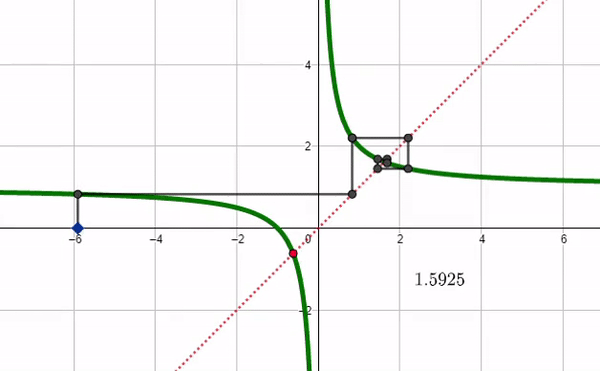In the Celestial Chorus, Earth Sings Alto
From Pythagoras to Kepler, mathematicians saw music in the motions of the planets.

The Earth and Venus are altos. Mercury sings soprano and Mars, tenor. Jupiter and Saturn together provide the bass.
It’s an idea that dates back to the Pythagoreans. The heavenly orbs resonate to produce mathematical music, audible to the spirit, if not to the ears. We may regard Pythagoreans as those mystic mathematicians that brought us the incantation:
Ace choired plus bees choired e-quills seas choired.
It has something to do with triangles, right?
It was Kepler, in his work, Harmonices Mundi — The Harmonies of the Worlds — who assigned the planets their respective choral parts. This was Kepler’s interpretation of the phenomenon of orbital resonance. Bodies in orbit about a common body can fall into step with each other. Venus completes almost exactly eight solar revolutions for every five of the Earth’s years. Three of Jupiter’s moons, Ganymede, Europa and Io, display a 1:2:4 resonance. Neptune and Pluto, although their orbits intersect, will never meet, thanks to their 3:2 resonance.

Pythagoras discovered the connection between harmonious chords and small whole number ratios. To connect these chords with the rhythms of the planets is more than an abstract fancy. Some have translated these ratios into music, with eerie results.
Resonances are responsible for the gaps within the rings of Saturn and within the asteroid belt. One definition of a planet is its ability to clear the neighbourhood — an apt phrase. A planet will clear its orbit of any other object, drawing it into its clutches as a moon, or banishing it from the solar system. A resonance may be stable, as in the former case, or unstable as in the latter — an orbital dissonance.
The ability of a system to self-correct — to gravitate to a stable state — is like the mathematical concept of a fixed point. A function, when its outputs are fed back into it as inputs, may have an attractor. This is a value that the function converges upon regardless of the initial input. A repulsive fixed point has the opposite effect. No matter how close the initial output comes to that point, the next outputs are drawn away from it.

Kepler saw this tendency toward small whole number ratios as evidence of the divine origin of the cosmos. The Pythagoreans believed that everything in the universe could be expressed as whole number ratios. They are said to have executed the individual who proved otherwise.
We are led to ponder what physicist Eugene Wigner wrote about as “the unreasonable effectiveness of mathematics” in modeling the universe. Is mathematics truly the language of the universe, as surmised by Pythagoras, Kepler, and Galileo? Is it something we discover or is it something we create? Would we answer this question differently regarding music?
One may find an uncanny pleasure in not knowing.





